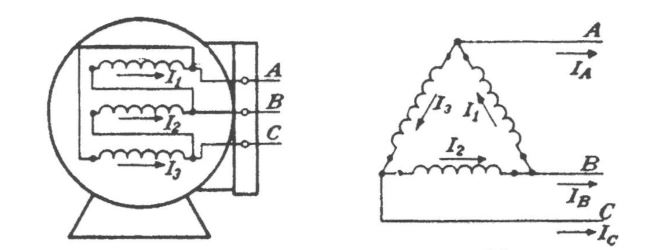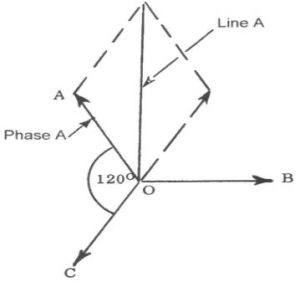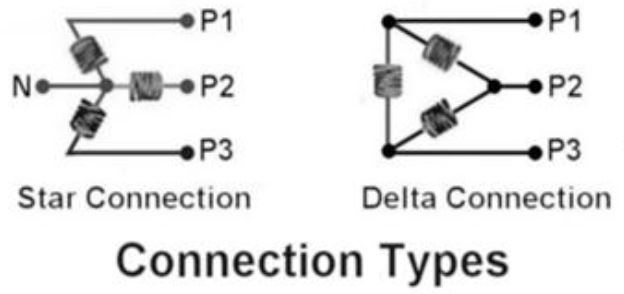Part 9 – Three-Phase AC and Calculations
Three-phase Circuits
Three-phase AC is used extensively because of the:
- Savings are involved in the transmission of large amounts of power compared with a single-phase system.
- More even flow of power.
- Three-phase machinery and its control equipment are smaller and more efficient than single-phase equipment of the same power output.
The combination of three single-phase circuits as far as the relationships of current voltage and power are concerned. It reduces the pulsing associated with single-phase circuits

If the amount of rotation required to generate this were divided into thirds The three conductors would be spaced 120 electrical degrees apart. Three windings wound upon a generator armature, spaced 120 electrical degrees apart brought out to separate slip-rings
Activity: Three-phase Circuits
Click the arrows to view images of three-phase circuits.
AC generator design:
- Armature windings producing the power are stationary (stator): high-voltage three-phase generating windings (stator windings) remain stationary.
- Field windings rotate (rotor): only a low-voltage DC current has to be supplied through brushes and slip-rings to the rotating field coils (rotor windings).
The following are two methods for connecting three-phase windings:
- Star: also known as “wye” connection
- Delta
Star Winding
Activity: AC Generator Connected Three-Phase Star
Click the image hotspots to learn more about AC generator connected three-phase star.
Activity: Three-Phase Voltage Vector
Click the tick marks on the slider to learn more about three-phase voltage vector.
Activity: Star Winding
Click the tick marks on the slider to learn more about star windings.
Calculating Phase Voltage
OD = OA cos 30°
OD = 0.866 x OA
And
OE = 2 x OD
= 2 x 0.866 x OA
= 1.732 OA
Or
OE = √3 OA

Line volts = √3 Phase volts
ELine = √3 x EPhase
Delta
Windings in which the three connections are brought out to form the three lines A, B, and C. No neutral point is available in this arrangement.

Line Voltage = Phase Voltage
The current flowing in each line (line current) is made up of the currents flowing in the two-phase windings connected to that line.

Current
Line Current = √3 Phase Current
ILine = √3 x IPhase
Voltage
Line Voltage = Phase Voltage
ELine = EPhase

